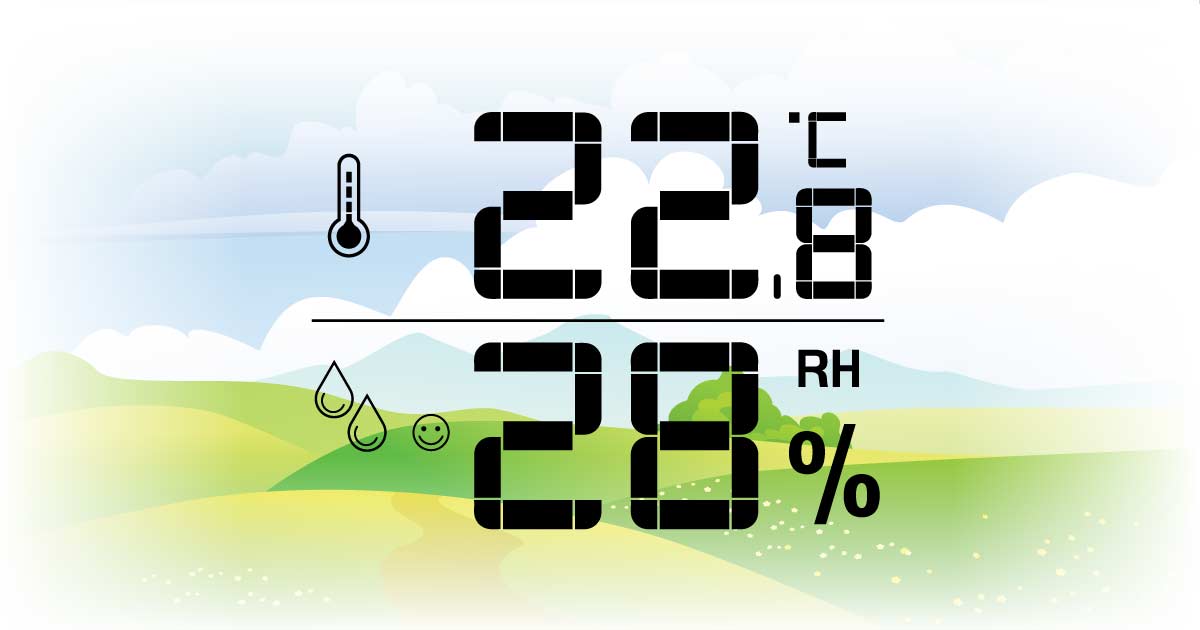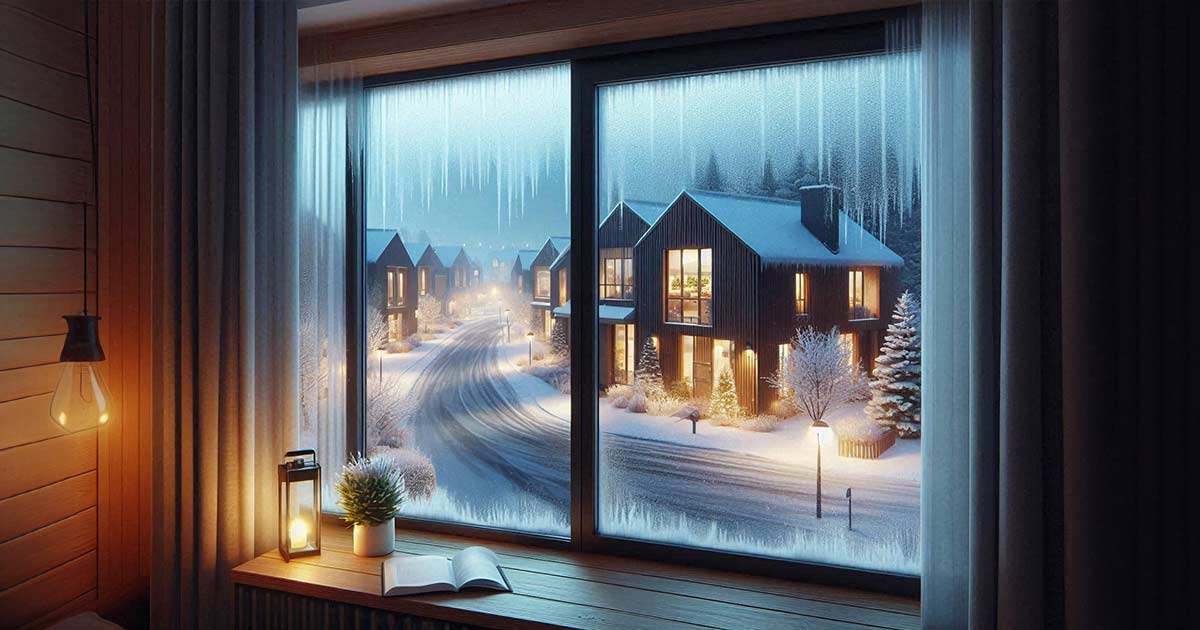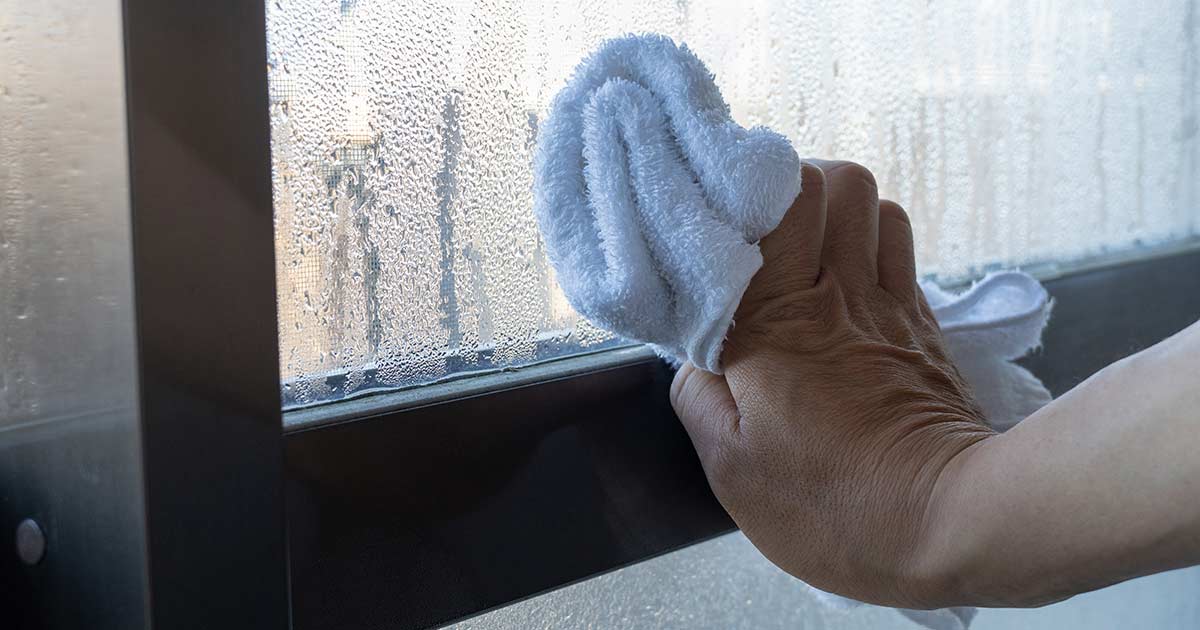Insights > Article > Posted: 2025-Mar-20, Updated: 2025-Mar-31
Condensation
How to Prevent

How to Prevent Condensation Issues in Your Home
Condensation on windows is a common problem many homeowners face, especially during extreme temperatures. Not only can it be unsightly, but it can also cause damage to your home over time. In this article, we will discuss the causes of condensation and provide you with tips on how to prevent and manage it in your home.
By following these tips, you can keep your home free from condensation issues and maintain a healthy and comfortable living environment.
Basic Condensation Prevention
1. Monitor and Adjust Humidity Levels
Keep humidity levels within recommended ranges by using a dehumidifier to remove excess moisture from the air.
2. Promote Good Air Circulation
Open blinds and drapes and direct heat towards walls and windows to improve air circulation.
3. Ensure Proper Ventilation
Use bathroom fans and make sure dryer vent hoods are sealed and unobstructed. Occasionally, open windows on opposite sides of the house for a couple of hours.
4. Upgrade to Energy-Efficient Windows
Energy-efficient windows help maintain a consistent interior temperature, reducing condensation.
Best combined ratings for maximum energy efficiency:
- Look for the highest CR-value.
- Look for the lowest U-value.
- Look for the highest R-value.
A Deeper Look into Condensation Prevention
1. Humidity Control
Use exhaust fans in bathrooms and kitchens to remove moisture. Keep humidifiers at an appropriate level (30-50%) and ensure they are well-maintained.
2. Improve Ventilation
Increase air circulation by opening windows or using ventilation fans.
3. Enhance Insulation
Add insulation to walls, attics, and basements to regulate home temperature and reduce condensation.
4. Monitor Indoor Plants
Indoor plants can raise humidity levels. Move them to sunnier spots or reduce their number if you notice excess moisture.
5. Check Vents
Ensure that your dryer and other vents are properly vented outside to prevent indoor moisture buildup.
6. Install Storm Windows
Storm windows improve insulation and prevent cold air from contacting warm surfaces, reducing condensation.
7. Maintain Gutters
Keep gutters clean and functional to prevent water backup and seepage into your home.
8. Seal Cracks
Seal gaps around windows, doors, and walls to prevent cold air from causing condensation.
9. Use Moisture-Absorbing Products
Use products like silica gel or activated charcoal in small spaces to absorb excess moisture.
10. Monitor Your HVAC System
Ensure your heating and cooling system is properly sized and functioning efficiently to regulate temperature and humidity.
11. Keep Surfaces Dry
Wipe down wet surfaces, like windowsills or bathroom tiles, to prevent moisture accumulation.
12. Use Proper Cookware
Use lids on pots and pans and a vent hood while cooking to remove excess moisture.
13. Install a Vapor Barrier
Use a vapour barrier in crawl spaces to prevent moisture buildup.
14. Ensure Proper Ventilation in Crawl Spaces
Install vents to allow air circulation and prevent humid air from accumulating.
15. Monitor Humidity Levels
Use a hygrometer to track humidity. If levels exceed 50%, use a dehumidifier.
16. Check for Leaks
Fix leaks in plumbing, foundation, roof, walls, or pipes to prevent moisture entry.
17. nsulate Pipes
Insulate cold water pipes to prevent condensation and reduce moisture buildup.
18. Avoid Indoor Drying
Drying laundry indoors increases humidity. Opt for outdoor drying when possible.
19. Avoid Indoor Firewood Drying
Drying firewood indoors releases water vapour, raising humidity levels.
Summary
Condensation on windows can be frustrating, especially during extreme temperatures. By understanding its causes and implementing the tips outlined in this article, homeowners can prevent and manage condensation issues. Maintaining proper ventilation and humidity levels, sealing cracks, using moisture-absorbing products, and avoiding indoor drying of laundry and firewood can help keep your home comfortable and healthy while preventing condensation damage.
Related articles
Need more information?
If you would like to know more about how we can help you reduce window condensation in your home, please give us a call or request more information via our contact form. We’d be happy to answer all of your questions
Fighting the Climate
Battling the Sun
INFOGRAPHIC
Understanding Causes
Why Take it Seriously?
How to Prevent
Year-round Semblance
New Window Fix?
Try Our Dewpoint Calculator
Humidity/Temp. Guidelines






